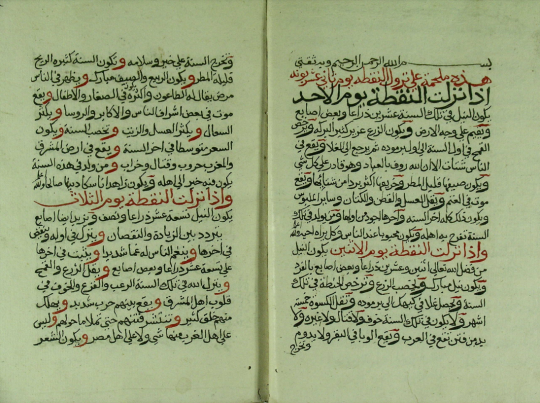#the point

I’m visiting my former hometown of Pittsburgh, so I got to see some familiar sights today, as well as some beautiful new ones… like Patrick, who kinda fell right in my lap.
My day with Scott was just so much fun. We really enjoyed the great outdoor space, and it was such a pleasure photographing this handsome man. ❤️
Post link
1.
This post will be about the curious phenomenon called the Descent of the Point (نزول النقطة). The conception of this phenomenon can be traced back to ancient Egypt. Through a basic background research [1,2,3], it appears to point to the moment when the first drop of rain arrives (Point, in Arabic Noqta, refers to the droplet of rain), ushering in with it the beginning of the Nile flood, which follows afterwards. The descent of the point is also astronimically linked to the movement of the sun and the beginning of summer. The flood season in turn marks a turning point in the climate and agricultural calendar where abundance in wealth, associated with water (for drinking, for the growing of crops, etc), begins to steadily increase.
Only a few sources accessible to me (far from an expert on the subject) discuss this phenomenon and knowledge-practice, which appears to have declined in use especially since the building of Nile dams over the past century.
The descent of the point, then, is conceptually the beginning (of everything, of life, of abundance, of the season), though it is not merely a conceptual category. The descent of the point is a phenomenon the records of which are annually kept and updated by Egyptians as a matter of learning about and adapting to the flooding of the Nile, in agriculture as well as in other domains of life including the economic, the social and the overall environmental spheres. For peasants, it affects sun rays and water, which in turn affect agricultural crops, bread doughs, and soil.
It is quite well known that Egyptians across ages have highly regarded the Nile as the source of life and in a way the primary influence and metric through which seasons unfold, and cyclical time is documented and predicted. According to one source, this phenomenon occurs on the 11th day of the Coptic month Ba’ouna, 4 days before the movement of the sun marking of the beginning of Summer. The descent of the point, then, is an essential phenomenon that affects and can be observed by everyone. Those who are tasked with keeping time and analysing the behavior of the cosmos in order to enhance our ability to predict environmental and weather conditions have access to well-documented logs spanning hundreds of years to the annual arrival of this phenomenon on which the Coptic calendar depends: the descent of the point.
I would like to extend this concept into being a metaphor for the beginning of writing, which i usually write about in this blog, though now is not the time for it yet.
—
2.
The first segment of this post was a general introduction to the phenomenon and its origins in ancient Egyptian practice and the Coptic calendar. This segment will be about this truly wonder-ful manuscript i came across at the Library of the Dominican Institute in Cairo, Malḥama ʿalā nuzūl al-nuqṭa yawm ṯānī ʿašar Baʾūna (ملحمة على نزول النقطة يوم ثاني عشر بئونة), which translates to The Prodigy of the Point’s Descent […] in Ba’ouna.

Perhaps the best one can start with in introducing this manuscript, is to transcribe it, as follows.
بسم الله الرحمن الرحيم وبه ثقتي
هذه ملحمة على نزول النقطة يوم ثاني عشر بونه
اذا نزلت النقطة يوم الأحد
يكون النيل في تلك السنة عشرين ذراعاً وبعض اصابع
ويقيم على وجه الارض و يكون الزرع عزيز كثير البركه ويرخص
القمح في اول السنه الى اول برموده ثم يرجع الى الغلا و يقع في
الناس شتات الا ان الله روف بالعباد وهو قادر على كل شيء
ويكون صيفها قليل المطر وخريفها اكثر برداً من شتائها ويقع
الموت في الغنم و يقل العسل والقطن والكتان وساير الملبوس
ويكون ذلك كله اخر السنه و اخرها اجود من اولها و من يولد في تلك
السنة تفرح به اهله و يكون محبوباً عند الناس وكل يراه اخيه والله اعلم
واذا نزلت النقطة يوم الاثنين يكون النيل
من فضل الله تعالى اثنين وعشرين ذراعاً وبعض اصابع بالفرد
ويكون نيل مبارك ويخصب الزرع وترخص الحنطة في تلك
السنةويخصل الغلا في كيهك الى بركوده و تقل الكسوه خمسة
اشهرولا يكون في تلك السنة خوف ولا قتال ولا غيره ولا
بد من فتن تقع في العرب و يقع الوبا في البقر ولا يدوم
وتخرج السنة على خير وسلامة وتكون السنة كثيرة الربح
قليلة المطر و يكون الربيع والصيف مبارك و يظهر في الناس
مرض يقال له الطاعون واكثره يكون في الصغار والاطفال ويقع
موت في بعض اشراف الناس والاكابر والروسا ويكثر
السعالويكثر العسل والزيت وتخصب السنة ويكون
السعر متوسطا في اخر السنة و يقع في ارض المشرق
والمغرب حروب وقتال وخراب و من ولد في هذه السنة
يكون فيه خير الى اهله و يكون زاهدا ناسكا دينا صالحا والله اعلم

Some food and beer (Oblivion Backside IPA, Mac and Jack’s African Amber) at The Point, Medford, Oregon.








